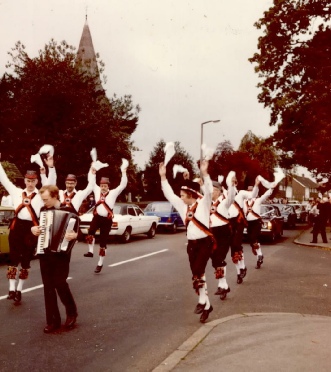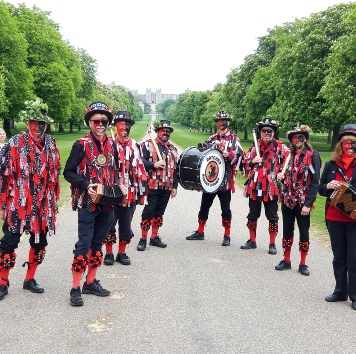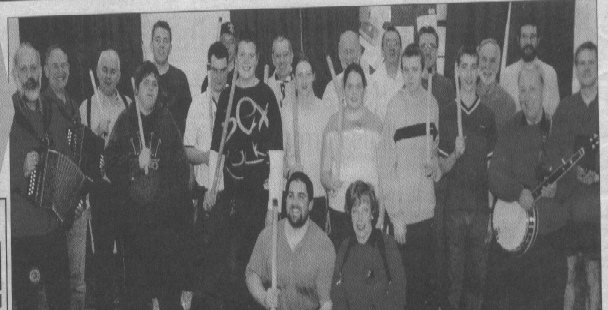The name "Morris" probably developed from 'Morisco' - a name used throughout Europe in the 15th and 16th centuries for any 'outlandish' or 'wild' dancing. This in itself could perhaps have been derived from "Moorish", but there is no evidence to support this.
Cotswold Morris is the most widespread style of morris dancing seen today and was collected from the South Midlands area including Gloucestershire, Oxfordshire, Northamptonshire and Warwickshire, but now has extending beyond these areas. Dances are usually for six or eight dancers, arranged in two lines of three.
We still perform one or two Cotswold dances, but concentrate on both traditional and newly created border dances (including some unique to Datchet), danced in our own distinctive style. There are now several sides that dance one of these two styles in the counties of origins and in the south of England, although some sides may have dances in their repertoire that are mixed.
In 2016 we decided to change our faces to black and red to reflect the flag of Buckinghamshire,

Border style of dancing was performed in the villages of the Welsh border counties (Shropshire, Worcestershire, Herefordshire and Gloucestershire).It is now thought that they pre-date the more common Cotswold style of Morris.
They are usually performed by sides of four, six or eight men who black their faces and wear 'rags' and dark trousers. The black faces and 'rags' are believed to have originated as a disguise to preserve the anonymity of men performing an annual 'ritual' dance to bring fertility to the land each spring.
The Datchet Morris Men formed in 1961, decided to change from Cotswold Morris to Border style dancing in 1991.


Dancers are dressed in white shirt and white trousers, although black breeches with long socks are common, together with black shoes. Dances usually consist of waving handkerchiefs, clashing sticks or, occasionally, hand clapping. Additionally there are solo or paired dances or Jigs.







Datchet Border Morris © 2012 -2025



 Members Login
Members Login




















 Members Login
Members Login






